We need your consent to use the individual data so that you can see information about your interests, among other things. Click "OK" to give your consent.
ASTM D6038-14
Standard Test Methods for Determining the Compatibility of Resin/Solvent Mixtures by Precipitation Temperature (Cloud Point)
STANDARD published on 1.1.2014
The information about the standard:
Designation standards: ASTM D6038-14
Note: WITHDRAWN
Publication date standards: 1.1.2014
SKU: NS-33518
The number of pages: 4
Approximate weight : 12 g (0.03 lbs)
Country: American technical standard
Category: Technical standards ASTM
The category - similar standards:
Annotation of standard text ASTM D6038-14 :
Keywords:
programmable cloudpoint tester, cloud point, compatibility, incompatibility, precipitation, resin, ICS Number Code 83.040.01 (Raw materials for rubber and plastics in general)
Additional information
| Significance and Use | ||||||||
|
5.1 These test methods provide a means of determining the compatibility of a resin (or vehicle), at low concentrations, in a high boiling ink solvent. 5.2 Resin-solvent mixtures that exhibit a high precipitation temperature are less compatible than those exhibiting a low precipitation temperature. 5.3 Resin-solvent mixtures that exhibit precipitation temperatures at or close to the cloud point of the pure solvent are considered infinitely compatible or the resin is infinitely soluble in that solvent. |
||||||||
| 1. Scope | ||||||||
|
1.1 These test methods cover the manual and automatic procedures for testing the compatibility of lithographic ink resins in high boiling ink solvents by precipitation temperature (cloud point) in a range from 35 to 210°C. 1.2 The manual procedure in this test method uses laboratory equipment generally available in a normal, well-equipped laboratory. The automated procedure uses a programmable cloudpoint tester. 1.3 This test method is for use with ink resins intended mainly for oil-based offset and letterpress inks. The type of resins are typically, but not limited to C1.4 A resin solution or ink vehicle could also be used in this test instead of the resin. 1.5 The typical high boiling solvents to be used are C12 to C16 petroleum distillates. 1.6 To avoid fire or injury, or both, to the operator, this test method should not be used with low flash point solvents such as toluene or xylene. The minimum flash point of the solvents used should be 60°C as determined by Test Method D56. 1.7 The values stated in SI units
are to be regarded as standard. No other units of measurement are
included in this standard.
1.8 This standard does not purport to address all of the safety concerns, if any, associated with its use. It is the responsibility of the user of this standard to establish appropriate safety and health practices and determine the applicability of regulatory limitations prior to use. |
||||||||
| 2. Referenced Documents | ||||||||
|
Similar standards:
Historical
1.10.2012
Historical
1.7.2010
Historical
1.9.2013
Historical
1.2.2011
Historical
1.11.2010
Historical
1.11.2013
We recommend:
Technical standards updating
Do you want to make sure you use only the valid technical standards?
We can offer you a solution which will provide you a monthly overview concerning the updating of standards which you use.
Would you like to know more? Look at this page.


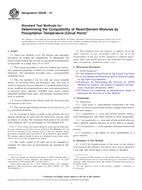
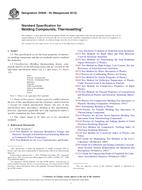 ASTM D5948-05(2012)..
ASTM D5948-05(2012)..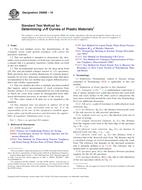 ASTM D6068-10
ASTM D6068-10 ASTM D6099-13
ASTM D6099-13 ASTM D6339-11
ASTM D6339-11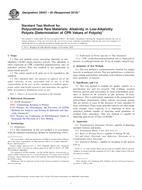 ASTM D6437-05(2010)e..
ASTM D6437-05(2010)e..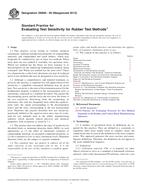 ASTM D6600-00(2013)..
ASTM D6600-00(2013)..
 Cookies
Cookies
